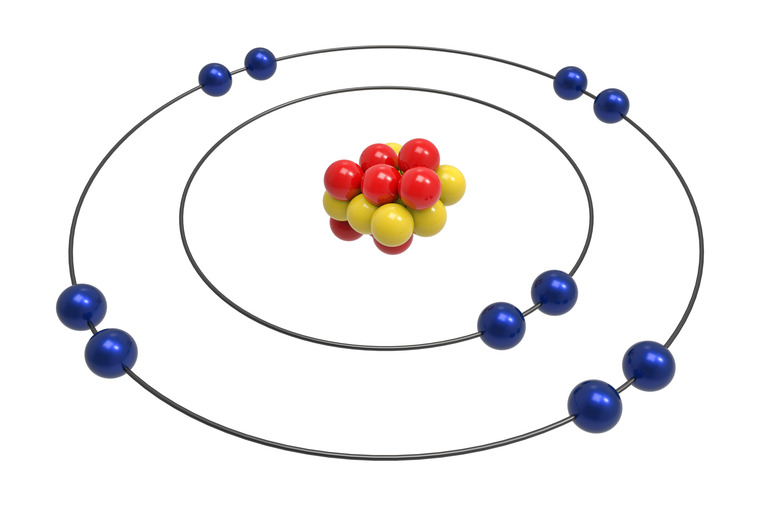How To Explain Polarity
In chemistry, polarity refers to the way in which atoms bond with each other. When atoms come together in chemical bonding, they share electrons. A polar molecule arises when one of the atoms exerts a stronger attractive force on the electrons in the bond. The electrons get drawn more towards that atom, so that the molecule exhibits a slight charge imbalance.
The Place of Electrons in a Bond
The Place of Electrons in a Bond
In a neutral atom, electrons orbit the atom's nucleus in a cloud. When atoms bond, they share these electrons. In this case, the electron density clouds intersect with each other. This is most pronounced in a covalent bond, in which electrons are shared equally. When a molecule is polar, however, the electrons tend towards one of the atoms of the bond. The exact image of the electron density clouds for these bonds can differ depending on the atoms involved.
Determining Polarity
Determining Polarity
The polarity of a bond is determined by a periodic concept called electronegativity. Electronegativity is an expression of an atom's tendency to attract electrons in a chemical bond. In order to determine the polarity of a bond, you must find the difference in the electronegativies of the atoms involved. If the difference is between 0.4 and 1.7, the bond will be polar. If the difference is greater, the bond will have an ionic character. This means that the electrons will be taken from the less electronegative element, and spend all of their time orbiting the more electronegative element. If the difference in electronegativities is smaller than 0.4, the bond will be nonpolar covalent. This means that the electrons will be shared equally between the atoms and the bond will not have a polar character.
The Dipole Moment
The Dipole Moment
In a polar bond, the resulting difference in the partial charges of each atom is called a dipole moment. The negative partial charge is located at the more electronegative element. The positive partial charge is located at the less electronegative element. The dipole moments in the individual bonds that make up a molecule can give the entire molecule a corresponding net dipole moment. While the molecule is said to be electrically neutral, it still has some attractive and repulsive properties due to its dipole moment. This can lead to some unique molecular properties. For example, the water molecule's molecular dipole moment leads to water's characteristically high surface tension.
Polar Bonds and Polar Molecules
Polar Bonds and Polar Molecules
In certain cases, the individual bonds of a molecule are polar in nature but the molecule itself is not. This occurs when the partial charges cancel each other out due to equal strength and opposite physical orientation. For example, the carbon dioxide molecule consists of two carbon-oxygen bonds. The electronegativity of oxygen is 3.5, and the electronegativity of carbon is 2.5. They have a difference of one, which means that each carbon-oxygen bond is polar. However, in the carbon dioxide molecule, the atoms are oriented linearly with the carbon in the middle. The partial charges of the two oxygen atoms cancel, yielding a nonpolar molecule.
Cite This Article
MLA
Murmson, Serm. "How To Explain Polarity" sciencing.com, https://www.sciencing.com/explain-polarity-42255/. 13 March 2018.
APA
Murmson, Serm. (2018, March 13). How To Explain Polarity. sciencing.com. Retrieved from https://www.sciencing.com/explain-polarity-42255/
Chicago
Murmson, Serm. How To Explain Polarity last modified August 30, 2022. https://www.sciencing.com/explain-polarity-42255/
